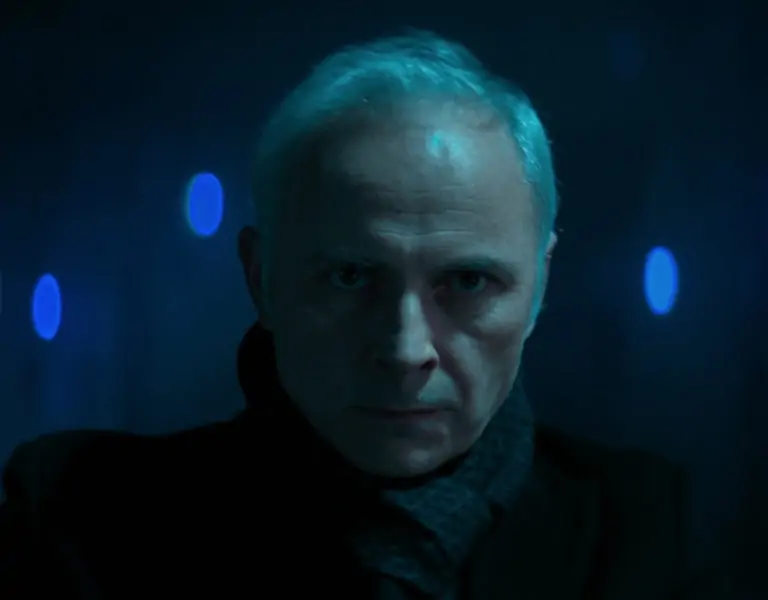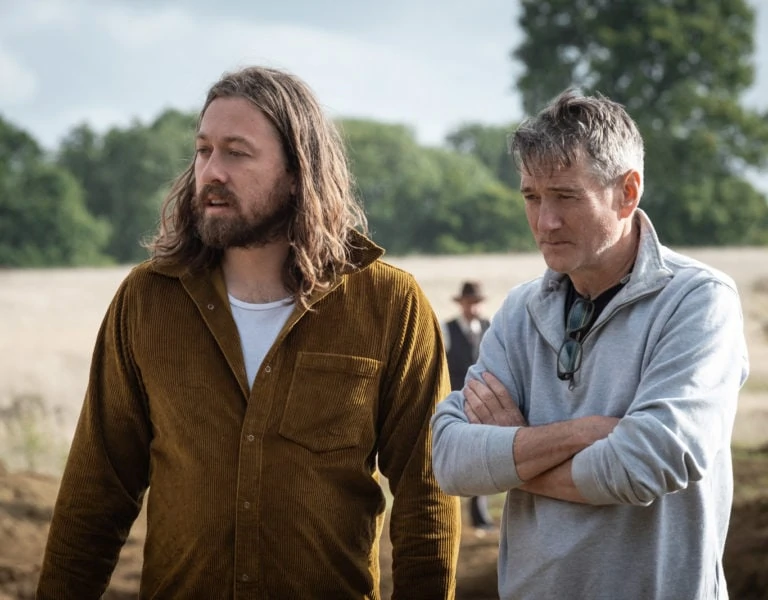LEADING THE WAY
Delivering an important message about climate change, short film Leader follows Donnie who lives alone in a remote coastal spot creating sculptures from ocean waste. Written by Rachel Shenton, produced by Rebecca Harris, directed by Chris Overton, and lensed by cinematographer Ali Farahani, the film was captured on a smartphone, presenting new creative possibilities whilst keeping the story at the forefront.
Cinematographer Ali Farahani and director Chris Overton have built a strong artistic and personal relationship through collaborating on several projects including the Oscar-winning short The Silent Child which, like their most recent production, was written by Rachel Shenton and produced by Rebecca Harris.
“Working with Chris is always an enjoyable challenge because I never feel any limitations on creativity, and there are always opportunities to explore new ideas, even if they develop in the moment while shooting,” says Farahani.

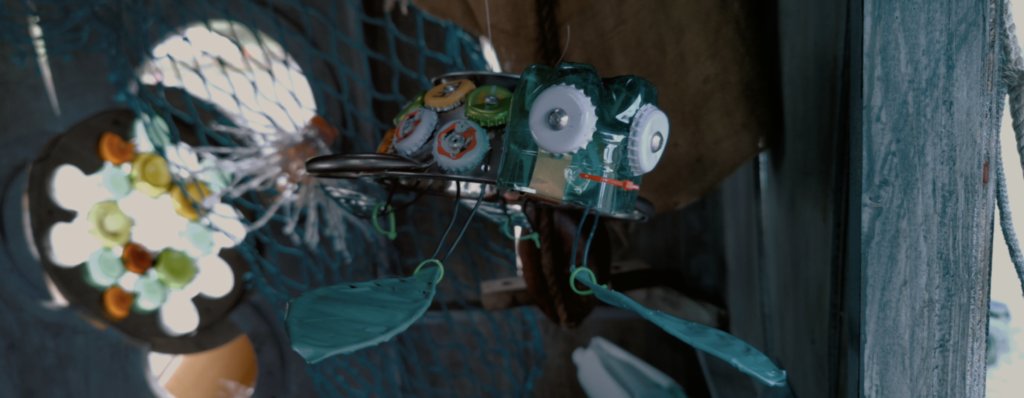
On this occasion, the filmmakers ventured into new territory with short film Leader, shooting the whole production – which formed part of the Xiaomi Film Festival – on a Xiaomi Mi 11 Ultra smartphone. To tell a story with an important message about sustainability, Overton wanted to make the narrative the priority, with the picture complementing rather than overshadowing the message. References drawn upon included films featuring isolated characters such as Mud, Castaway, Life of Pi, and Wall-E.
Extensive research into using the phone as a camera body to which a long lens would be attached gave the filmmakers a better understanding of the limitations they might face and the creative freedom they could enjoy. Location scouting also offered a clear idea of the camera positions and the options when combining long lenses with the phone, including where it would be impossible to set up a long lens such as when shooting scenes on a boat.
Having decided to film at a beautiful, secluded beach in Cornwall, the shoot took place over two days in August 2021. Two days prior, Overton and Farahani visited the location to check technical and artistic aspects and to shoot pickups.
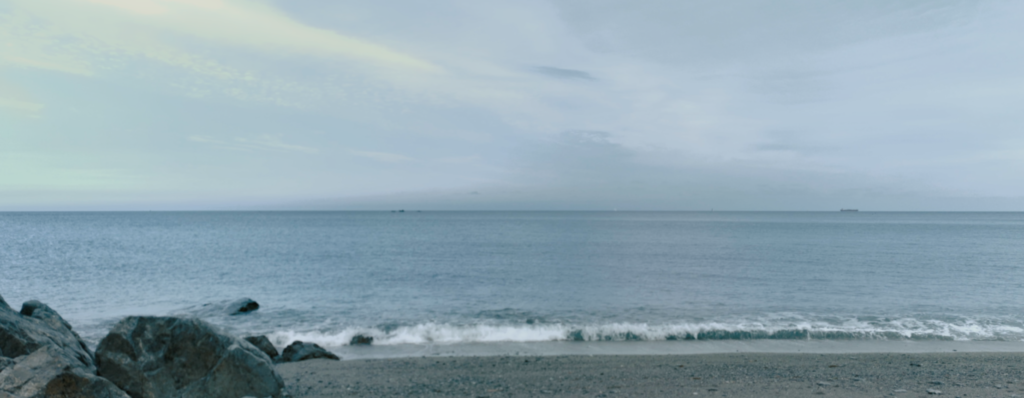
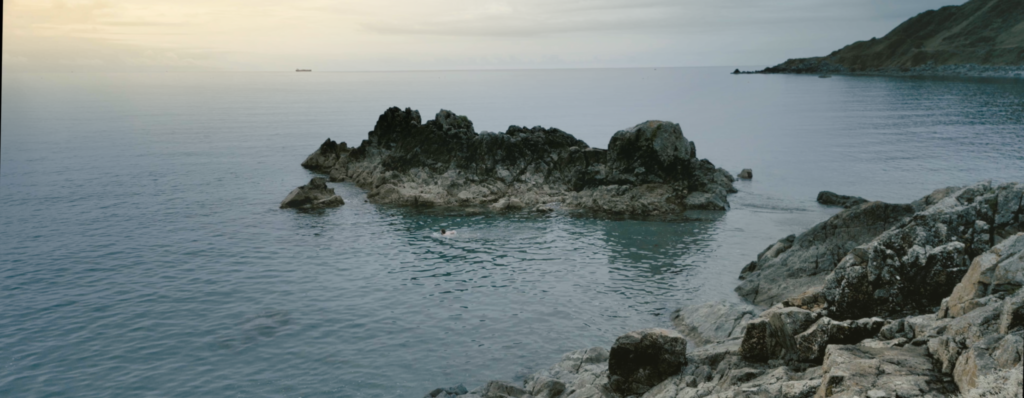
Bringing the story to life using a smartphone was not something Farahani had experienced at this level, and it opened up a new technical and creative world. Fortunately, he had already researched shooting on a smartphone for a previous film which was later captured with a cinema camera.
Farahani captured Leader with two phones, using one of the phone’s in-built cameras and shooting 16:9, and using a lens adaptor and cage to mount a Zeiss 70-200mm and 28-80mm compact zoom lenses to the other phone shooting 4:3. While rehearsing a shot with one camera, an insert or different scene could be captured with the long lens on the other camera. All cave scenes were filmed with both cameras simultaneously.
As no lens adaptors or cages had been made for the model of smartphone being used to shoot Leader, tests were carried out to find the best solutions. Researching the most suitable grips such as gimbal, track, underwater cage, and finding apps or software (Filmic Pro and Protake) to record at the highest possible quality were the next parts of the process. Track (Grip Gear Electronics) and gimbals (DJI OM 4 three-axis smartphone gimbal) designed for smartphones made the desired camera movements possible.
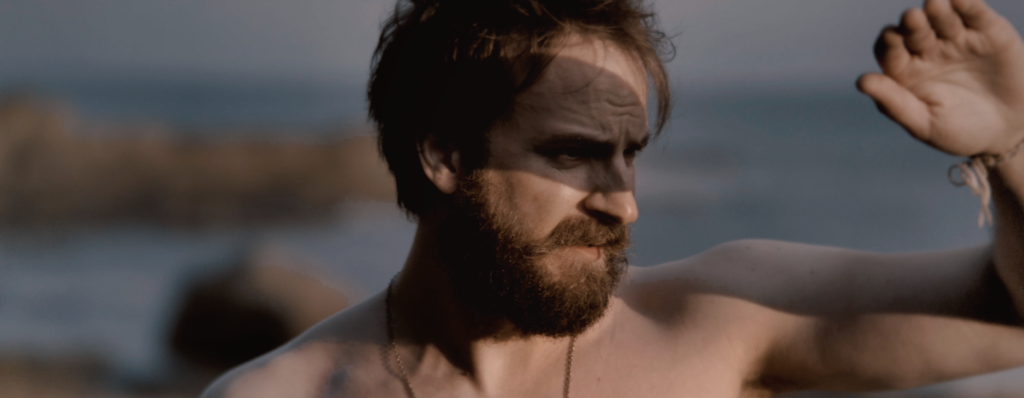
Technical and artistic discussions led Overton and Farahani to agree on a cinematic look with the addition of layers such as sea, rocks, rain, and sun to achieve a meaningful picture whilst maintaining the realism, rather than just “shooting something beautiful”.
To capture cinematic-style visuals, a 2:55 crop was used to create a widescreen look that Overton felt made the production look “more cinematic and less like it had been shot on a phone”. This affected framing when shooting with the camera with the long lens, meaning Farahani had to carefully consider the composition. “I was experiencing a different focal length and shallow depth of field when shooting with a zoom lens, so I had a limited sharp area for those shots,” he says. “For example, in one scene, I could only put the characters in the centre of the shot otherwise they would not have been sharp enough.”
In the shots captured using the phone lens, he had more freedom to use many elements to create a composition that would help the storytelling. Farahani adds: “In some of the atmospheric shots, I could even design a tracking shot inside the waves or fit the camera in narrow places to find different angles.”
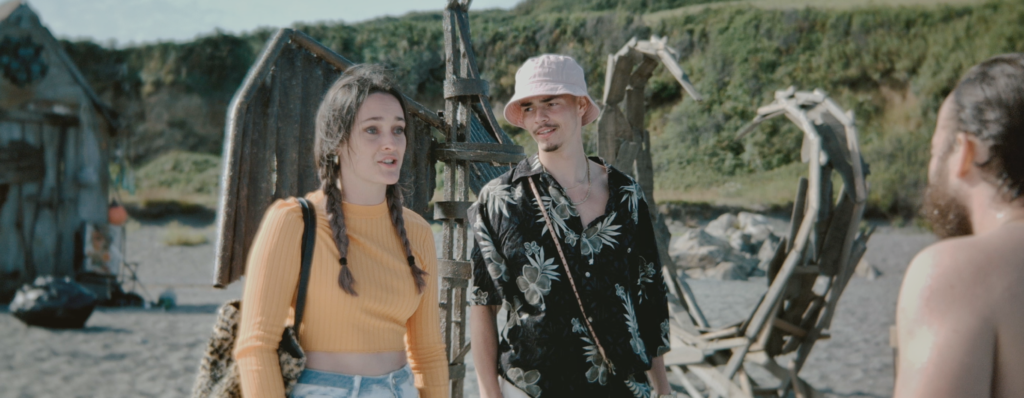
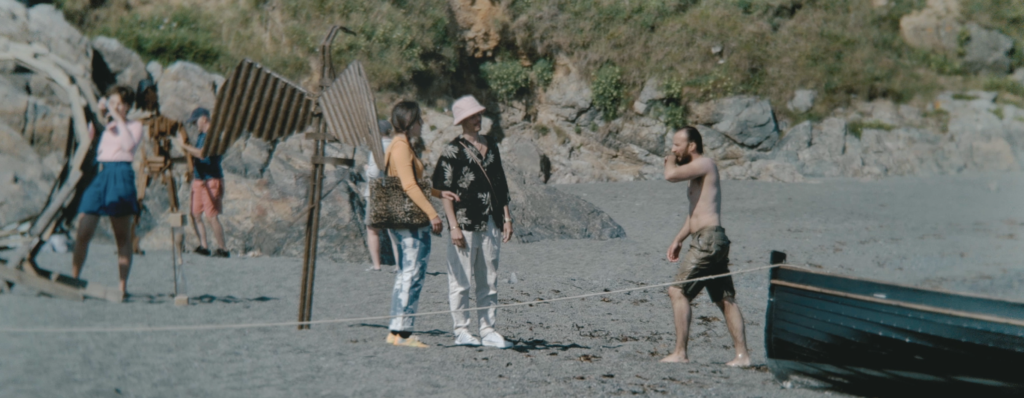
Production designer Rachel Denning came up with solutions that would align with the way the film needed to be captured with phones. “For example, when we discussed the size of the beach hut and the windows, I explained how I could use them as a source of light,” says Farahani. “She then helped us achieve that, whilst thinking about camera position and reflection, by tweaking the sizes and angles of the huts and adapting the way they were dressed.”
Overton adds: “Silhouette and shadow were important motifs in the film. Inside the shack we wanted to create plenty of shadow to contrast with the bright light outside.”
Freedom to experiment
Shooting with a smartphone gave Farahani the liberty to experiment with camera angles and movement, changing the story’s perspective when needed. 1st AC and second camera operator Neal Parsons’ hard work and commitment were also crucial during this process.
“I wanted to use a lot of static, wide shots to show Donnie’s isolation and when we moved the camera it was a smooth motion,” says Overton. “It was also important to inject energy at times, so following moments that needed to be peaceful and static we would contrast them with more dynamic moments.”
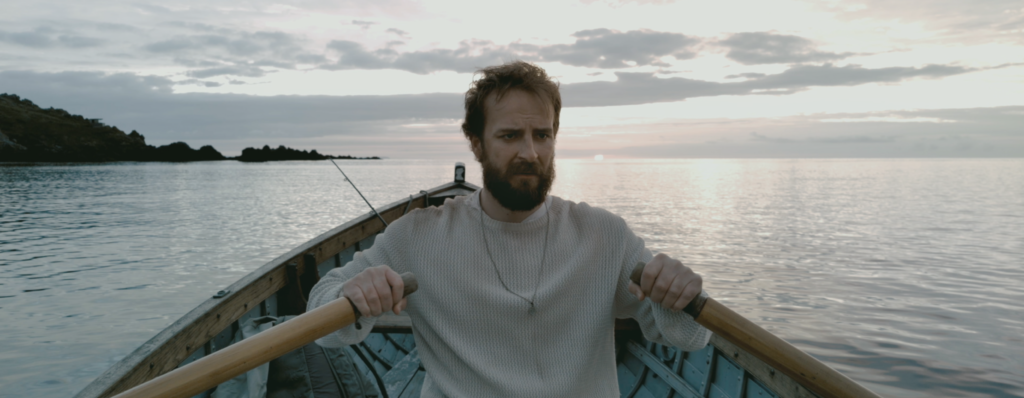
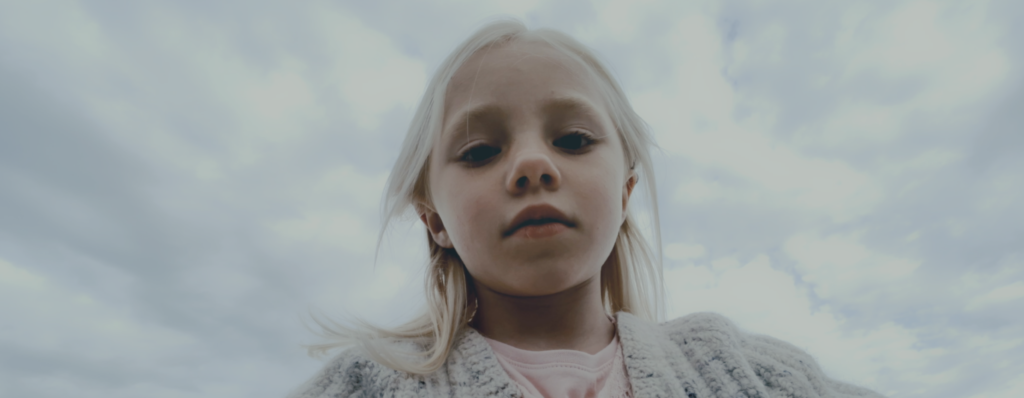
The size of the camera and the special grips used meant it could be placed in unusual spaces that would be more difficult to achieve with a cinema camera. “But at the same time, using the long lens and fitting it to the phone could be tricky at times,” says Farahani. “I had to check many technical aspects before every scene and sometimes needed to de-rig the camera on set and start from scratch.”
Knowing the phone could be used under water up to a depth of 50 metres, Overton designed plenty of underwater shots which are among the sequences he is most proud of. At first, they shot using the smartphone’s underwater cage, but the image was foggy.
“I knew that the phone was waterproof, so we put it in the water without the underwater cage to shoot and the end result was great,” says Farahani “We just needed to wait a few hours for the phone to dry before we could dump the rushes.”
Due to the nature of the story, exposing the natural light was deemed to be the best option. Based on the mood that needed to be achieved, gaffer Jordan Dubash devised a solution that would expose the light in the correct way, especially for interior shots. The internal shots of the hut scenes had to be shot at different times of the day and because of the camera angles used, the crew had little room to use lights inside the hut. The solution was to defuse the natural light and recreate the sunlight with light inside the hut through the windows to keep the continuity. For the night scenes, we used ARRI SkyPanel S60s and Nanlux 1200D to artificially create moonlight and fire effects.
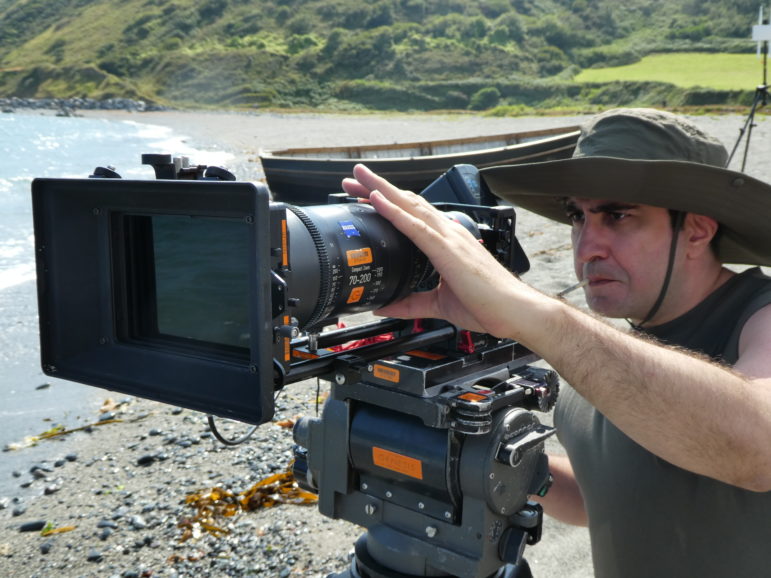
Each camera read light in a different way, so it was important to find the optimum mutual dynamic range, which required many tests with different apps and software. “For example, we always had a better exposure when using the Protake app in low light, but we had no remote control for that, so we switched to Filmic Pro when we needed more control in the software for focus pulling and to change the lighting to expose the right dynamic range,” says Farahani.
“As I knew I wanted to expose the natural light, I took less of a risk on exposing the dynamic range. I created some standards for myself. As each camera read the light differently, I needed enough mid tones to give me room to play in post to match different exposures from different cameras and lenses.”
With Filmic Pro and Protake apps being used to record, mirroring apps transmitted the footage to an iPad for preview and focus pulling. The apps required a strong internet connection which wasn’t always reliable at the beach, so the filmmakers frequently changed apps and software.
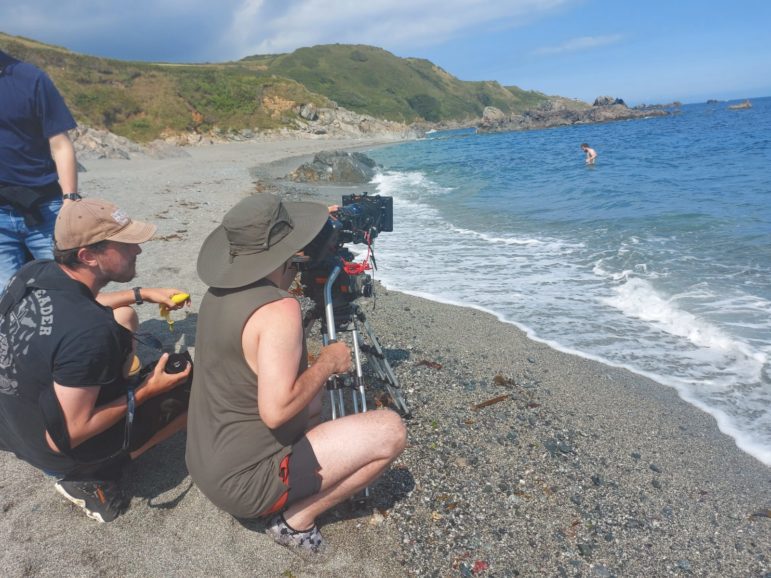

After discussions with colourist Finley Reid at Goldcrest, Overton and Farahani agreed to begin with a complementary colour scheme as a base consisting of colours that sit opposite each other in the colour wheel to balance out one another. In addition, by adding Fujifilm LUTs and tweaking elements such as Colour Gamma and Curves to achieve a variety of tones and soften contrast but still keep the composition, they created a unique look that illustrated the right mood and atmosphere for the story.
“We discovered there is less room to go further in the grade and even though the phone is 4K there is only so much range to work with, so it was more important to make the props and costumes colourful,” says Overton.
Attention to detail was key, as was creating enough room for other aspects of filmmaking such as editing, sound design, and grading to play their part. Farahani’s editing background was beneficial when choosing shot size, camera movement, and angle.
“When facing a new challenge such as this project, tackling it by using a combination of past experiences, knowledge, and plenty of research beforehand, gave me confidence in my decision making and more flexibility for creativity,” says Farahani.
Although Overton would not have considered shooting on a phone before, he would in the future: “It allows for more creativity which comes back to the most important thing – the story. I’m proud of the way Leader looks and proud to say that look was created using a phone.”



